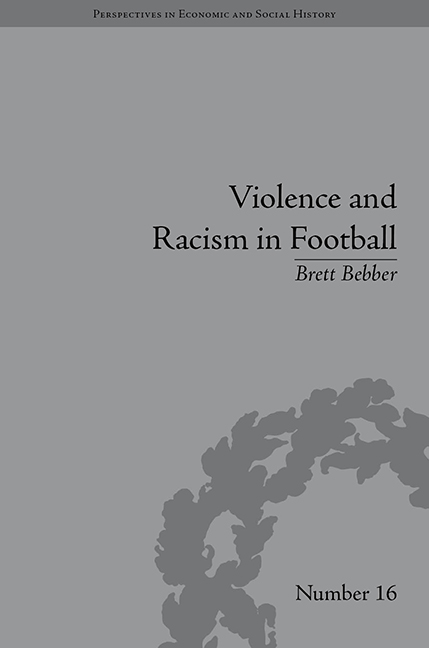Book contents
- Frontmatter
- CONTENTS
- Acknowledgements
- List of Figures
- Introduction: Sport, Politics and History in Post-War Britain
- Part I Violence and Politics in British Football
- Part II The Total Policy of Containment
- Part III Racism and Cultural Conflict in British Football
- Conclusion: Legacies of Violence in British Football
- Notes
- Bibliography
- Index
Conclusion: Legacies of Violence in British Football
- Frontmatter
- CONTENTS
- Acknowledgements
- List of Figures
- Introduction: Sport, Politics and History in Post-War Britain
- Part I Violence and Politics in British Football
- Part II The Total Policy of Containment
- Part III Racism and Cultural Conflict in British Football
- Conclusion: Legacies of Violence in British Football
- Notes
- Bibliography
- Index
Summary
Though I originally began this project seeking to better understand the social relationships which produced social outcasts in 1960s and 1970s Britain, the archival material revealed that a fundamental set of relationships lay outside interaction between groups of football supporters. The relationships between the state and working-class spectators conditioned the entire environment of football and its disorderly scourges of violence and racism. I realized that the history of football disorder demanded a comprehensive analysis of the state's violence against its own citizens in the social space of the football ground. The scholarly literature on the topic delved deep into questions of identity formation and the uses of feigned and actual aggression, but only rarely discussed the complex and contradictory governmental theatre of operations. While many speculated on the multiple motivations for individual and collective violence in football, the political uses of the ‘football question’ and how government agencies responded to this aspect of social disruption remained ignored. This evidence revealed that the state unequivocally encouraged the construction of violent, confrontational and aggressive environments through long and haphazard bureaucratic processes. Analysing the entire web of social relationships defied any Manichaean polarity between supporters and the state, and exposed how sport in post-war Britain represented broader conflicts about working-class instability, polarized dialogues about race and nation and the imposition of social order through various mechanisms of authority.
Examining this particular social arena also exposed how several groups of social actors politicized British sport and infused football with cultural significance.
- Type
- Chapter
- Information
- Violence and Racism in FootballPolitics and Cultural Conflict in British Society, 1968–1998, pp. 231 - 236Publisher: Pickering & ChattoFirst published in: 2014



